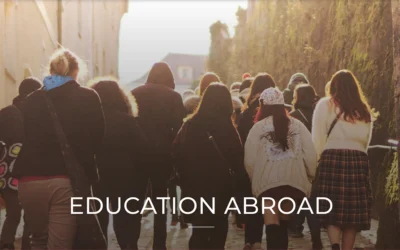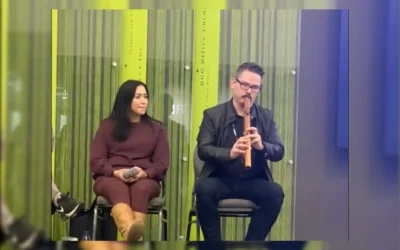Whether the thought of interning in your field of study is nerve-wracking or exciting, field placement is a requirement for several diploma and degree programs at MacEwan University. Forms of work experience vary between faculties, but regardless of what they’re called, these placements are a significant step on the way to program completion.
An issue surrounding student internships, however, is that many of these roles are unpaid. Placements occur in a variety of settings, including not-for-profits that don’t have the means to pay for student work, and government institutions whose funding may not be sufficient to compensate interns.
Hours are typically full-time, and the student pays tuition for the “placement” course in which their work occurs. This can be especially problematic when placements occur in the summer, a time when many students would otherwise be working to save money for tuition.
‘Students have always talked about the value of being able to go out into the work world and get that experience so that when they come back to class, some of their concepts make a little more sense to them.’
-Sebastian Panciuk
Field placements with local agencies are arranged through Work Integrated Learning (WIL) and are typically completed as part of a course or a series of courses. Other than MacEwan Works, a website that helps students find available positions, online resources regarding the technicalities of field placement are limited. If you’re not in the process of setting up a field placement, it can be difficult to find information that may help plan for it.
Each field placement program provides students with unique experiences and learning outcomes. When explored separately, they provide a comprehensive overview of the ways in which students engage in work experience.
Social Work
(Faculty of Health and Community Studies):
A student can complete their social work education in one of two ways, either through a diploma or a degree program. The program’s field education coordinator, Danielle Larocque, explains that diploma students are involved in field placements through both years of study, whereas students receiving their bachelor’s in social work are expected to complete field placements in their third and fourth years — unless they have already received their diploma, in which case field placement occurs only in fourth year.
All agencies looking to offer field placement experience to MacEwan students must go through a process of being vetted, both by the university and by the department with which it seeks to coordinate, according to Career Development and Experiential Learning facilitator Leeanne Pawluski.
MacEwan has relationships with a variety of employers across Edmonton. In some programs, students are allowed — even encouraged — to find their own field placements, but that’s not the case with the social work program.
“We don’t encourage students to find their own placement … there are many agencies that might get several calls per day … so it becomes overwhelming for the agencies,” Larocque says.
She adds that, while students are unable to choose exactly where they complete their internship, they are encouraged to discuss their interests with placement coordinators in order to ensure they end up somewhere that is a good fit.
“They’re observing, they’re shadowing, they’re understanding the structure of the agency … they spend time understanding the community and the people that the agency serves,” Larocque says, highlighting the significance of field placement to the students involved.
“Students are involved in placement for both years (of the social work diploma program). They are in placement for two days a week … September right through until April, for a total of
480 hours.”
She explains that social work students are assigned an on-site supervisor and a faculty liaison, with whom they can speak about their work experiences as well as any issues they may
be having.
“All students are encouraged to fill out a feedback (form) at the end of the year to let us know how they felt about the process and the field experience in general,” Larocque says.
Journalism/Professional Communication
(Faculty of Fine Arts and Communications):
Journalism and professional communication are the two majors comprising the Bachelor of Communication Studies program. Despite the many overlaps in course work for journalism and professional communication students, their field placements look quite different.
While journalism students may work in settings ranging from TV newsrooms to daily papers, professional communication students work most often with corporations and non-governmental organizations (NGOs). As a result of working with nonprofits, professional communication students are somewhat less likely to be paid for their field placement, according to program chair Lucille Mazo.
Field placement is 180 hours of full-time work, usually occurring outside of fall and winter semesters.
“It is in the summer, mostly because that’s when the bulk of positions occur … sometimes a student who cannot do it in the summer can also do it any time of the year,” Mazo says. “So let’s say that you wanted to work for a magazine and do long-form journalism … that doesn’t necessarily have to occur in the summer.”
While many forms of journalism do occur on a day-to-day basis, work with a periodical can add flexibility to a student’s schedule in a way that still allows them to meet requirements.
Bachelor of Science in Nursing
(Faculty of Nursing):
Nursing students are expected to complete a clinical placement in each of their four years of study.
The faculty’s clinical placement coordinator, Shelly Gillespie, says students receive highly varied experience working in pediatric, hospital, public health, and mental health settings throughout their degree.
In their final year, Gillespie remarks that aspiring nurses can expect to “spend two days a week with nurses who are not at the bedside … nurses who may be directors, managers, clinical educators, or in other positions than direct patient care.”
Students in their final year also complete a 10-week preceptorship with a registered nurse, in which the student fully takes on that nurse’s patient load.
Nurses are needed in a variety of settings, and clinical placement reflects this. Students can expect to be placed “anywhere within the province of Alberta,” Gillespie says.
Clinical placements in nursing are unpaid.
Business
(School of Business):
Business students have the opportunity to complete the equivalent of field placement in “cooperative education.”
Co-ops differ from traditional field placements in both the length of study and nature of work. “Students alternate going to school with paid work terms. That’s one big difference — co-op terms are paid work terms,” says Sebastian Panciuk, business’ cooperative education coordinator.
According to Panciuk, co-ops have only been an option for supply-chain management students in the past, but school officials are planning to integrate co-ops fully within the school of business by September 2017.
“Co-op students need to complete 12 months of work experience over the course of their degree, and that is typically broken down into three four-month work terms,” Panciuk says.
Conditions permitting, students typically complete their co-op work during the summer months, but may also work more than one term consecutively, he says.
However, a co-op education placement does come with some restrictions. Panciuk says that students are unable to complete a continuous year of work placement to fulfill graduation requirements.
“The idea behind a co-op education is that it alternates between work and study,” he says.
“Students have always talked about the value of being able to go out into the work world and get that experience so that when they come back to class, some of their concepts make a little more sense to them.”
However, students are not guaranteed a placement when they want one. Hiring depends on the economy, as well as the marketability of the individual student, according to Panciuk.
“The co-op program is a collaborative program in the sense that we work together with the student to help secure employment opportunities …. But it’s ultimately up to the student to secure an employment opportunity,” he says.
“Our hope is to be able to provide resources to the students that will enable them to acquire these positions.”
Available resources include networking, interview practice, and resume review.
Field placements across MacEwan are as diverse as our student body, and participants must consider what works for them. Ultimately, the purpose of a field, clinical, or co-op placement is to gain work experience in an environment similar to what students can expect post-graduation.
Larocque, Mazo, Gillespie, and Panciuk all agree that field placements are generally a positive experience for the students involved, but knowing the technicalities of a program’s work experience arrangements, such as time, location, and pay — or lack thereof — is crucial.
A less-than-ideal situation spurred on by a lack of information shouldn’t stand in the way of a student’s dreams.
Illustration by Alley MacLean.





0 Comments